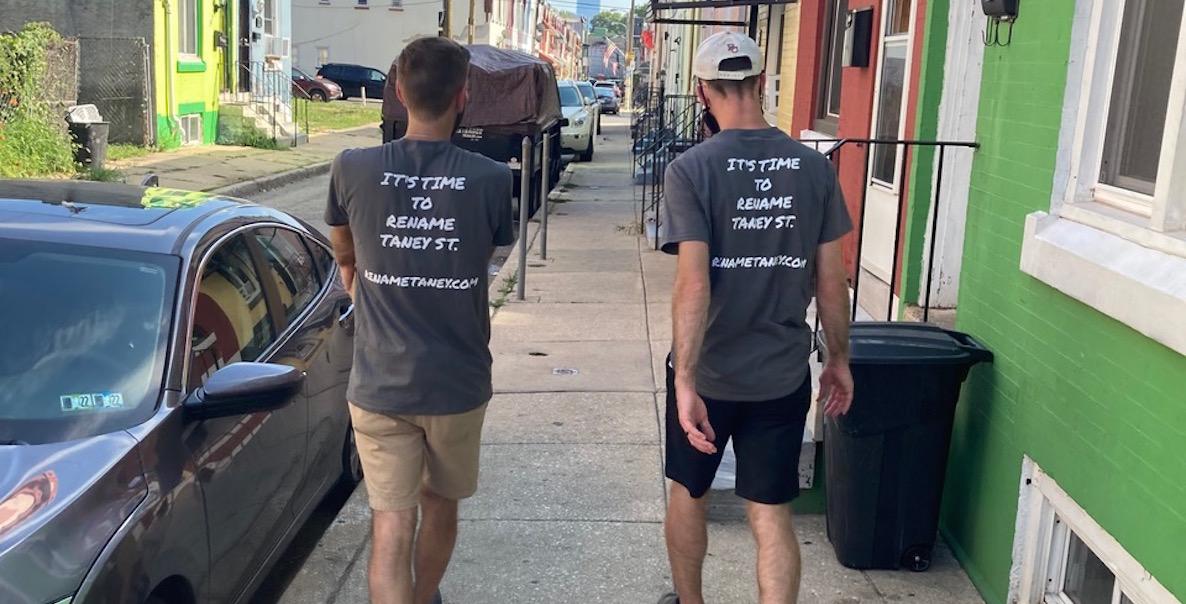The Supreme Court’s decision in the 1857 case of Dred Scott v. Sandford is, without a doubt, the very worst in its history.
The case was brought by a Missouri slave, Dred Scott, whose owner had brought him into a free state (Illinois) and free federal territory (free portions of the Louisiana Territory). Scott sued for his freedom, arguing that his residence on free soil made him a free man. The Supreme Court rejected his claim with a racist, legally illogical opinion.
Chief Justice Roger B. Taney’s majority opinion in Dred Scott oozed white supremacy. He declared that Black slaves and their ancestors “are not included, and were not intended to be included, under the word ‘citizens’ in the Constitution, and can therefore claim none of the rights and privileges which that instrument provides for and secures to citizens of the United States.”
Taney sought to settle the question of Black citizenship once and for all … in the negative. Moreover, Taney ruled that the Missouri Compromise — which barred slavery in all federal territories north of latitude 36°30′ and west of Missouri — was unconstitutional.
“To rename a street in the honor of the absolute worst decision in Supreme Court history in a northern city—the cradle of democracy—the need for change couldn’t be more glaringly obvious,” says Keys.
Taney’s vile decision provoked a backlash. It helped spur the political rise of the anti-slavery Republican Party and reinvigorated anti-slavery constitutional thought. Some, like Abraham Lincoln, rose to political prominence by denouncing Taney’s decision for distorting the views of the founders and lacking a basis in constitutional law and American history.
But others — including many Philadelphians — celebrated Taney’s vindication of white supremacy. In fact, in 1858 (just one year after the Dred Scott decision was handed down) some Philadelphians went ahead and renamed Minor Street to Taney Street in the chief justice’s honor.
Taney’s infamous name still sits atop the street, which runs discontinuously between 26th and 27th streets, through Grays Ferry, Fitler Square, Fairmount and Strawberry Mansion.
Now, a group of residents — including the former chief justice’s own great-great-great-great niece, who lives in West Philly — are organizing to reverse the wrong of their residential forebears and rename the street. Their sustained efforts provide a case study in civic persistence, despite a lack of urgency in City Hall.
No easy feat
The “Rename Taney” effort was launched in June 2020, in the wake of George Floyd’s murder. Two neighbors on Taney Street in Fitler Square, Ben Keys and Joshua Isserman, were already aware of the harm done to the cause of racial equality by their street’s namesake, and their outrage in the wake of Floyd’s death spurred them to do something about it.
It turns out that Keys, an educator, and Isserman, a health care professional, weren’t the first Taney residents to be outraged at their street’s name and to be in favor of changing it. There had been one-off petition processes and calls for removal in the past, but they never got anywhere.
Why?
There’s only one way to change a street’s name in Philly, and it’s to pass a bill in City Council to remove the name and designate a replacement. It turns out that’s harder than it sounds, even when it entails removing and replacing the name of a man who once ruled that Black people could never be citizens from a street in Philadelphia, circa 2021—when nearly half of the city’s citizens are Black.
Keys and Isserman say that much of their struggle, which has now lasted well over a year, consists of fighting apathy. Spreading awareness of the issue, getting City Council members to pay attention, and then building consensus on a replacement name takes time, organization, and effort.
It doesn’t help that Taney Street discontinuously runs through those separate neighborhoods (Grays Ferry, Fitler Square, Fairmount and Strawberry Mansion) and encompasses three separate Councilmanic districts (Kenyatta Johnson, Darrell Clarke, and Curtis Jones). It’s not hard to imagine how the oft-derided institution of councilmanic prerogative can be a bit of a hurdle here — and that’s understating matters. There are plenty of toes to be stepped on. The group has intentionally made it a point to collaborate with all three councilmembers—and say that Johnson’s staff have been the most helpful in collaborating on the efforts.
And given that Philly is still very much a “city of neighborhoods,” Isserman and Keys note that “a neighborhood only a mile away can feel like a world away.” Indeed, this coalition runs the gamut from Fairmount and Fitler Square, where poverty rates range from 4 to 6 percent to North Philly Taney Street, where it goes to 40 percent. The residents of the street span racial, geographic and socioeconomic divides. They don’t naturally form a meaningful community, so there aren’t pre-existing relationships and past community efforts on which the organizers could build. They had to start from scratch.
The first step — outreach
After meeting with Councilmember Johnson, Keys and Isserman tasked themselves with leading an exhaustive process of building public support among residents to change the name, documenting that public support, and then forging a consensus among residents as to a replacement.
Rename Taney leaders compiled an email list in June 2020, with the help of social media posts and paper door hangers placed along South Taney Street homes. Soon after, with the help of a community engagement firm, Connect the Dots, they organized a town hall that was well attended by North and South Taney Street residents, alike.
MORE ON EFFORTS TO HONOR BLACK PHILADELPHIANS
They admit that it’s been a “long, exhaustive process” that could be extremely frustrating at times; some residents have grown discouraged. But Rename Taney’s leaders are not giving up.
The first step of convincing their fellow Taney Street residents that the name had to go, through the community engagement work in the summer of 2020, was the easy part. Keys puts it well: “It’s an absolute no-brainer: To rename a street in the honor of the absolute worst decision in Supreme Court history in a northern city—the cradle of democracy? The need for change couldn’t be more glaringly obvious.”
Another historically-minded Taney Street resident who’s helped lead the charge, St. Joe’s Prep history teacher and Fairmount resident Leo Vaccaro, agrees. He adds that Taney’s white supremacist beliefs “went above and beyond the racism of the time.”
“It starts to affect your spirit”
Keys, Isserman, Vaccaro, and others designed a survey explaining the background of the street’s name, asking residents whether they support renaming the street, and inquiring about potential name replacements. The survey was circulated from the fall of 2020 through last winter, and a virtual community town hall meeting capped it off, during which residents could share their thoughts on why they supported renaming or not.
Michelle Hiett, a Taney Street and Allegheny West neighborhood resident, says that after coming across the Rename Taney survey online and learning about the history behind her block’s name, she was troubled. As a Black woman, it was hard for Hiett to live on a block named after a man who had sought to deny her citizenship and human rights.
“It starts to affect your spirit — it’s counterproductive to your whole being,” she says. Renaming the street, then, is about “improving the spirit” of the block.
Tyrique Glasgow, the executive director of the Young Chances Foundation and a Grays Ferry resident, agrees. For him, renaming Taney Street is a matter of community self-esteem, “pushing back on the notion that our community is worthless.”
In the end, the results of the survey weren’t even close: Like Hiett and Glasgow, over 89 percent of residents supported renaming. Meanwhile, the holdouts tended to agree with the renaming efforts on the merits, but they cited logistical concerns like having to update driver’s licenses and mailing addresses to reflect their block’s new name.
The coalition leaders then drafted an April 2021 community engagement report documenting the survey’s results to share with the relevant councilmembers.
What’s next?
The next step for Rename Taney is to forge consensus on a replacement name. During door-knocking events in Gray’s Ferry, Fitler Square, and Fairmount, they hit hundreds of houses and received dozens of suggestions, including the names of prominent Philadelphians like Sadie Mossell Alexander, Caroline LeCount and Julian Abele—or ideals they’d rather be known for: friendship, unity, humanity, love.
The conversations between neighbors during these door-knocking events have been fruitful. Glasgow says neighbors “opened up” to one another during these conversations, and that Rename Taney members like himself stressed to their neighbors that although “we didn’t make this problem . ..we can help it.” Glasgow describes the Taney Street name as a marriage between the community and Taney “that we didn’t affect,” and now it’s time for a divorce.
They’ll stop taking suggestions regarding replacement names on September 1, at which point they’ll open up a final vote and share the results with the relevant councilmembers, hoping to convince one of them to introduce a bill.
“It’s important to be civically engaged, and I do actually love this country, and I think Roger Taney stood against what this country is all about,” says Vaccarro.
Philly’s Taney Street residents are not the first to seek to drop the Taney name: Last year, the Taney Baseball Association — of the 2014 Little League superstars — renamed itself the Philadelphia Dragons; in 2017, Baltimore and Annapolis both removed Taney statues; and in 2020, the U.S. House of Representatives removed a Taney bust from its chambers.
Such moves shouldn’t be taken lightly. We need to be careful of turning the past into a simplistic tale of good and evil, and wiping out the memories of imperfect Americans who were products of their times — as we all are. And to be sure, renaming a street—even one that spans so many neighborhoods — will not materially change the lives of any Black Philadelphians, past or present.
It is a symbolic gesture, like last year’s removal of the Frank Rizzo statue, the fight over the Christopher Columbus statue in South Philly, the renaming of Andrew Jackson School after Fannie Jackson Coppin, a former slave turned Philly educator.
The efforts to wipe Taney’s name from their street speak to what Philadelphians want Philadelphia to stand for today, the way the original renaming spoke to whom those Philadelphians were in 1858. Do we want to be a city that continues to celebrate those who actively supported the repression of Black Americans? Or do we want to actively stand for something better? As Vaccaro says: “There’s not much nuance to Taney; he was just a white supremacist.”
“For me, I feel like I got involved in this because I see myself as a patriotic person,” he adds. “It’s important to be civically engaged, and I do actually love this country, and I think Roger Taney stood against what this country is all about.”

RELATED
Guest Commentary: Let Philly Be Our Guide Out of Our Divisions
Header image: Rename Taney members Brian Lang and John Stuetz | Photo by Leo VaccaroMystery Shopper: How hard is it to get rid of illegal dumpsters?




